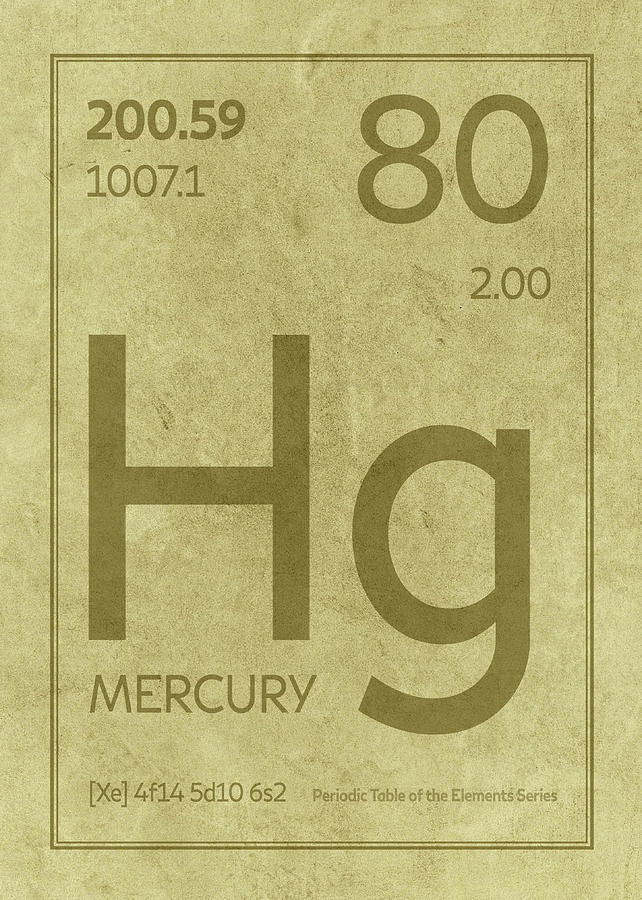

The ancient Greeks used mercury in ointments and the Romans used it in cosmetics. China's first emperor, Qin Shi Huang Di - said to have been buried in a tomb that contained rivers of flowing mercury, representative of the rivers of China - was driven insane and killed by mercury pills intended to give him eternal life. In China, India and Tibet, mercury use was thought to prolong life, heal fractures, and maintain generally good health. Mercury was known to the ancient Chinese and Hindus and was found in Egyptian tombs that date from 1500 BC. Accuracy is expected to be within one second in 100 million years. In some applications, mercury can be replaced with less toxic but considerably more expensive galinstan alloy.Ī new type of atomic clock, using mercury instead of caesium, has been demonstrated. In Islamic Spain it was used for filling decorative pools and for fountains. This would cause mysterious structural failures. A mercury paste was applied to bare aluminium, causing the metal to rapidly corrode. It was also allegedly used by allied spies to sabotage German planes. Mercury compounds have been used in antiseptics, laxatives, antidepressants, and antisyphilitics. Historical uses: preserving wood, developing daguerreotypes, silvering mirrors, anti-fouling paints (discontinued in 1990), herbicides (discontinued in 1995), cleaning, and in-road leveling devices in cars. Thiomersal, (called Thimerosal in the United States), an organic compound used as a preservative in vaccines, though this use is disappearing.Miscellaneous uses: mercury switches, electrodes in some types of electrolysis, batteries ( mercury cells, including for sodium hydroxide and chlorine production, and alkaline batteries), catalysts, insecticides, dental amalgams/preparations and liquid mirror telescopes. This is used to work out the electrode potential of half cells. Used in electrochemistry as part of a secondary reference electrode called the calomel electrode as an alternative to the Standard Hydrogen Electrode.The fountain is now on display at the Fundació Miró in Barcelona. Alexander Calder built a mercury fountain for the Spanish Pavilion at the 1937 World's Fair in Paris.It must be emphasized that the former two procedures, especially, are extremely hazardous. Mercury is still used in some cultures for folk medicine and ceremonial purposes which may involve ingestion, injection, or the sprinkling of elemental mercury around the home.This polluting practice is still used by the garimpeiros (gold miners) of the Amazon basin in Brazil. Mercury was once used in the amalgamation process of refining gold and silver ores.However, sodium is proposed for reactors cooled with liquid metal, because the high density of mercury requires much energy for circulating the coolant. Liquid mercury was sometimes used as a coolant for nuclear reactors.Gaseous mercury is used in mercury-vapor lamps and some " neon sign" type advertising signs and fluorescent lamps.In some gaseous electron tubes, mercury arc rectifier.The triple point of mercury, -38.8344 ☌, is a fixed point used as a temperature standard for the International Temperature Scale ( ITS-90).
/mercury---quicksilver-droplets-97997497-5c489a8ac9e77c0001979944.jpg)
As an opaque liquid with a very high density, it is ideal for this role.

Mercury barometers, diffusion pumps, coulometers, and many other laboratory instruments.It is used in some thermometers, especially ones which are used to measure high temperatures (In the United States, non-prescription sale of mercury fever thermometers is banned by a number of different states and localities). Mercury is used primarily for the manufacture of industrial chemicals or for electrical and electronic applications. Mercury is mostly obtained by reduction from the mineral cinnabar. Mercury is used in thermometers, barometers and other scientific apparatus, although the use of mercury in thermometers has been largely phased out in clinical and scientific environments (in favour of alcohol-filled, digital or thermistor-based replacements) due to concerns about the element's toxicity. A heavy, silvery transition metal, mercury is one of five elements that are liquid at or near standard room temperature (the others are the metals caesium, francium, and gallium, and the nonmetal bromine). Mercury ( IPA: /ˈmɜːkjəˌɹi/), also called quicksilver, is a chemical element in the periodic table that has the symbol Hg ( Latinized Greek: hydrargyrum, meaning watery or liquid silver) and atomic number 80.


 0 kommentar(er)
0 kommentar(er)
